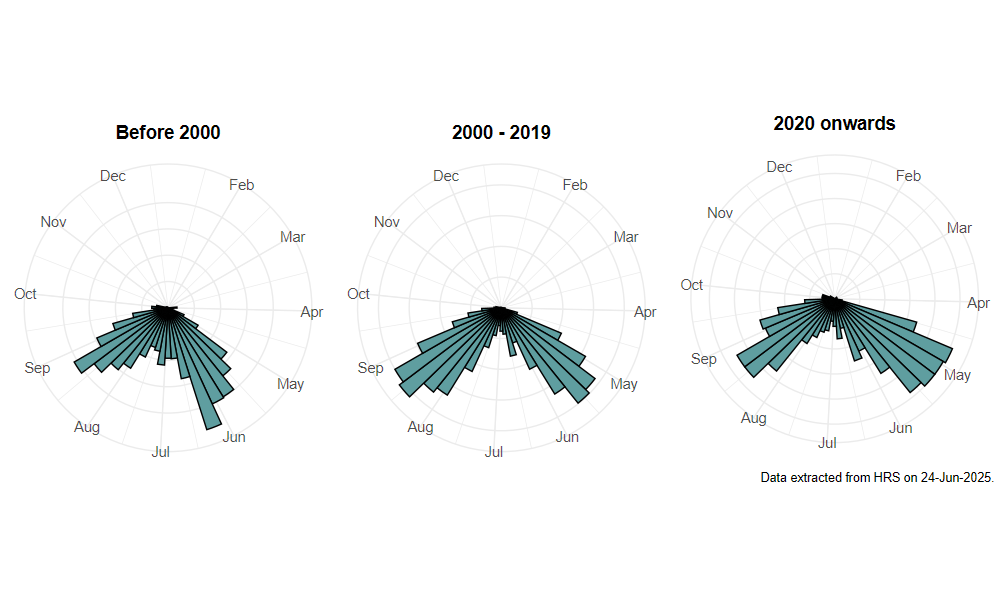Platycheirus peltatus (Meigen, 1822)
Identification
Identification difficulty = 3. ![]()
![]() according to Ball & Morris, 20241
according to Ball & Morris, 20241
Synonymy
Platycheirus nielseni was split from P. peltatus by Vockeroth (1990)2.
Biology
The early stages of this common species require further investigation because the identification of the specimens that have been described is open to doubt. The available data suggests that the larva preys on a range of aphids in shaded, moist sites. It appears to be a more lowland species than P. nielseni, occurring in upland areas only along valley floors. It is found in damp, grassy situations along rivers and streams, in woodland rides and clearings and around large hedgerows. Adults fly low down amongst the vegetation and will settle on sun-lit leaves. Males hover over bare patches.
Flight period
The following plots show the number of unique records per week excluding those reported to be of immature stages.

Distribution
Widespread and common in lowlands throughout Britain.

Trends
The following plots show the Frescalo TFactor vs year and a map of the rescaled frequency (all records) for the species.